Trump's Border Wall Designs Are Public
By:
In March, the United States government solicited public bids for two different border walls with Mexico: a "Solid Concrete Border Wall" and "a Other Border Wall [sic]", the latter of which would seek to incorporate "a see-through component/capability ... that facilitates situational awareness."
Each required the submissions to be "physically imposing in height," invulnerable to both climbing and digging, "aesthetically pleasing" (on the U.S. facing side), and "cost effective" to build and maintain. Much of these parameters echo Donald Trump's campaign rhetoric, which included calls for a "big, beautiful wall" that ranged anywhere from 30 to 80 feet high.
The first deadline to submit renderings was this week, and over 730 designs for both the solid and see-through wall were submitted to Customs and Border Patrol. Many were subsequently made public by the San Diego Union Tribune and Wall Street Journal. The results are wide-ranging, from modern takes on classic protective structures to outlandish defensive measures, as well as a few bids that were clearly made in protest.
DarkPulse Technologies, which touts its border security measures with the slogan: "They Don't Stand a Chance," submitted a design laced with fiber optic cable inside and underneath the wall. DarkPulse CEO Dennis O'Leary claimed that such precautions are needed, as there tunnels as deep as "80 feet" under the border. It's also built to withstand a direct hit from a shell fired by a tank, should such a situation ever arise.
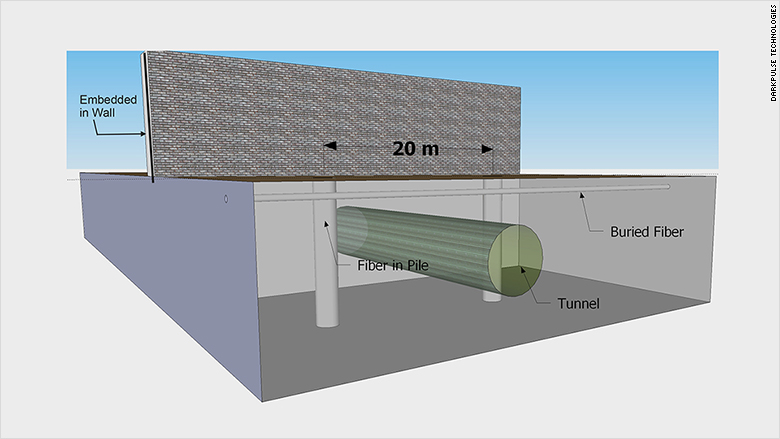 DarkPulse Technologies/CNN Money - cnn.com
DarkPulse Technologies/CNN Money - cnn.com
San Diego firm National Consulting Services answered the call with a structure that incorporates a monorail to ride on top of the wall, which would come installed with a system that could "use voice analysis technology to detect different emotional states of riders."
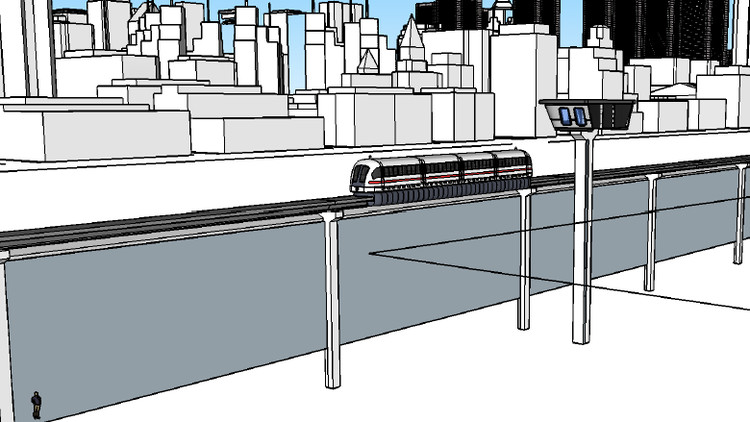 National Consulting Service/San Diego Union-Tribune - sandiegouniontribune.com
National Consulting Service/San Diego Union-Tribune - sandiegouniontribune.com
Clayton Industries, a Pittsburgh firm that "develops and matures existing technologies for the aerospace, defense, energy, material science, robotics, and waste industries" combined all of its strengths in one design. In a rendering seemingly made in MS Paint, they propose a wall that starts with a chain-link fence, backed up by a no man's land of "RF tomography sensor banks," and a 100-foot deep tunnel filled with drums of nuclear waste.
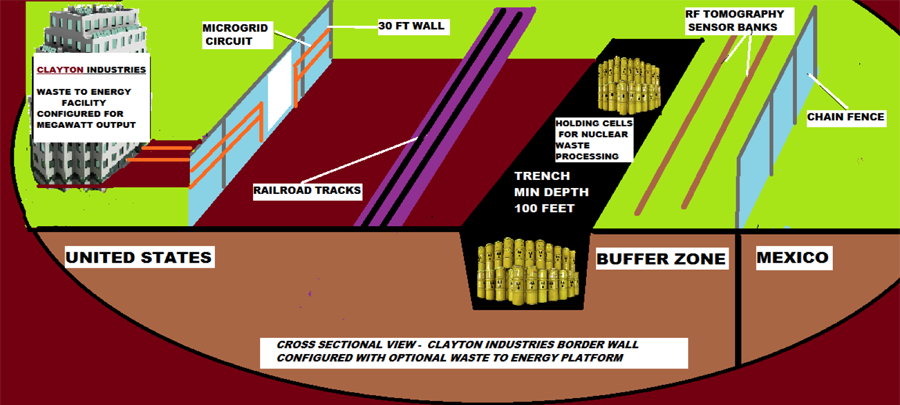 Clayton Industries/Wall Street Journal - wsj.com
Clayton Industries/Wall Street Journal - wsj.com
Crisis Resolution Security Services sought to build "not just a physical barrier to immigration but also a symbol of the American determination to defend our culture, our language, our heritage, from any outsiders," by submitting a design influenced by the Great Wall of China which adds a graded berm to prevent climbing.
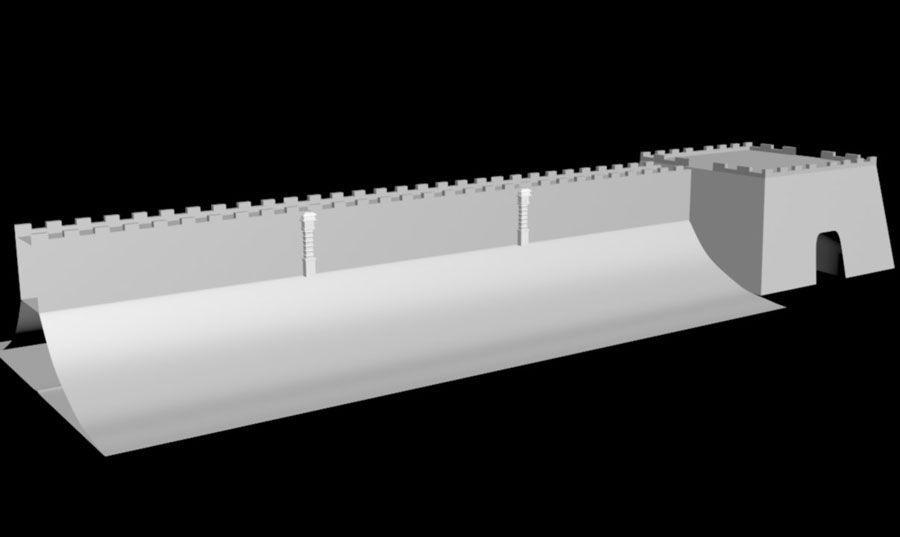 CRSS/ Wall Street Journal - wsj.com
CRSS/ Wall Street Journal - wsj.com
As CNN reported, Gleason Industries owner Thomas Gleason said that he informed his design by speaking to "young people, some of Spanish decent," who told him that "if the wall is going to be built, they want it to be green." Accordingly, his design incorporates solar panels, and the company's statement said the design wouldn't injure attempted climbers ("except for the fall,") while withstanding all breach attempts.
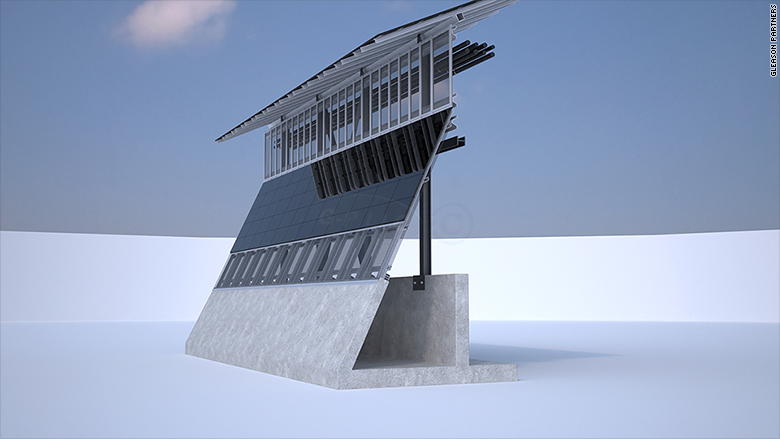 Gleason Industries/CNN Money - cnn.com
Gleason Industries/CNN Money - cnn.com
Fort Worth's Penna Group proposed a 30-foot-high double-wire impact-resistant mesh wall covered by a one-way mirror that would allow border patrol agents to see the Mexican side of the border, but not the reverse. Such designs are often used in maximum security prisons.
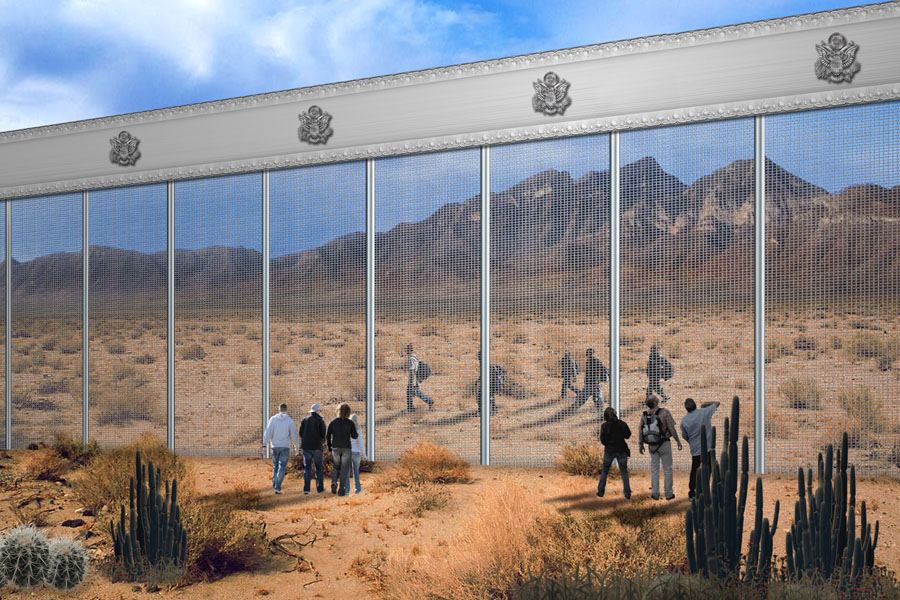 Penna Group - pennagc.com
Penna Group - pennagc.com
Arizona firm Advanced Warning Systems chimed in with a complex triple-wall system featuring a fence, a 25-foot wall of solar panels designed to literally prevent Mexicans from seeing the United States, and a "constant water flow aqueduct" resembling a moat.
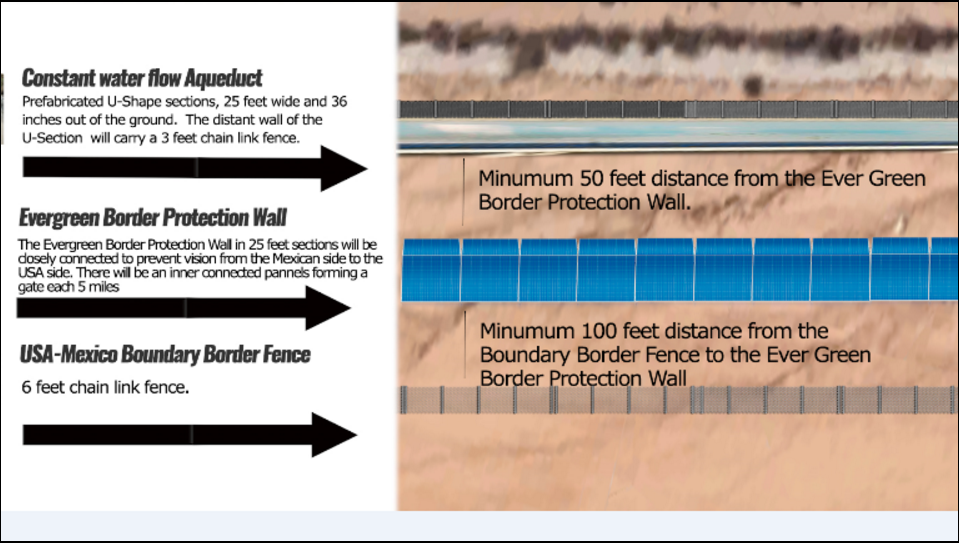 Advanced Warning Systems/San Diego Union Tribune - sandiegouniontribune.com
Advanced Warning Systems/San Diego Union Tribune - sandiegouniontribune.com
But many proposals were made to protest or mock the concept of the wall. J.M Designs, an all-women architectural firm in Pittsburgh, submitted a number of whimsical designs, which included a wall comprised of three million hammocks strung across the border on giant trees, ten million 30-foot-tall pipe organs, and 30-foot tall interlocking lighthouses.
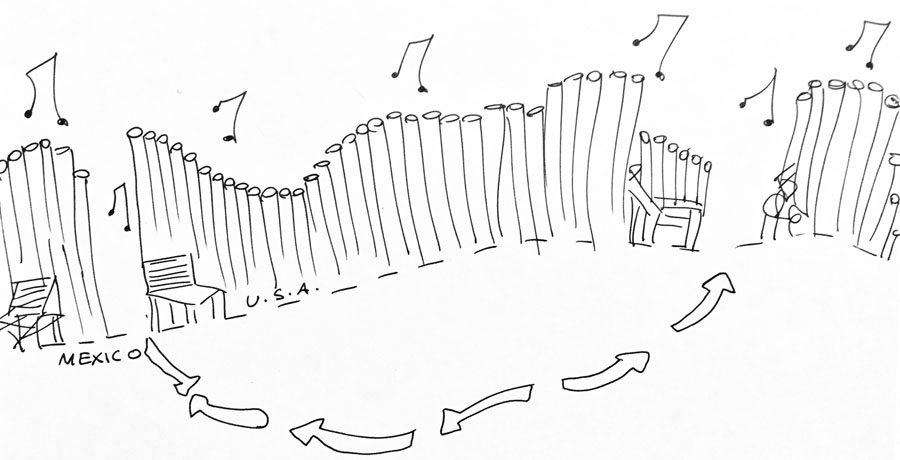 J.M. Designs/Wall Street Journal - wsj.com
J.M. Designs/Wall Street Journal - wsj.com
Despite these varied designs, the cost and funding source of the wall remain a mystery. The current cost estimate has ballooned to over $21 billion and with a government shutdown looming, Congress announced it will not appropriate the funds needed to start construction.
